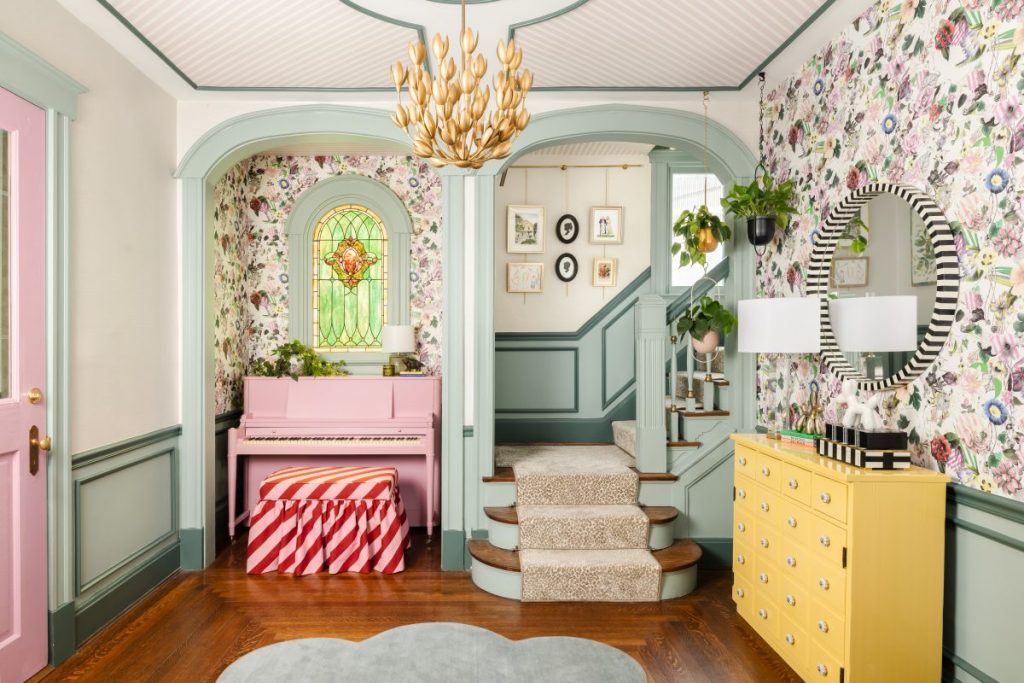
24 Nov Where Design Meets Wellness
Every color, light source and floor plan send signals to your brain and body, influencing everything from stress levels to sleep quality. Every product you select for a remodel also stands to affect your indoor-air quality.
Many consumers are becoming increasingly aware of this. So are many design-build firms and product suppliers who have incorporated healthful products and services into their offerings.
These offerings are a top focus at Jackie Barnes Design, member of the Well-Dwelling Experts Network, in Cincinnati, Ohio.

Photo courtesy of Jackie Barnes Design.
“Your home should work in harmony with your body and the planet, by being a place that helps you breathe easier, think clearer, and live more intentionally,” Jackie Barnes, owner and principal, says. “Whether it’s as simple as choosing natural materials, introducing biophilic color, or creating intentional gathering spaces, design can truly make you feel better.”
Here are some of Barnes’ tips for creating a healthful home that not only look beautiful, but feel healthy, balanced and alive.
Color boosts mood
Color has a measurable impact on our well-being. The hues that surround us can lift our energy, calm our nerves, or even sharpen our focus.
- To relax: Choose soft, nature-inspired hues like greens, blues, or muted neutrals that mimic the outdoors and signal calm to your nervous system.

Bold color can be added in keeping with client’s style.
- To energize: Warmer tones like sun-washed yellows or terracotta can spark creativity and motivation—perfect for kitchens or home offices.
- To ground: Earth tones like clay, sand, and stone connect us back to nature and help reduce mental fatigue.
The wellness connection: Color psychology isn’t just about beauty, but rather, it’s about balance. Surrounding yourself with tones that align with your emotional goals can lower stress and improve overall well-being.
Layout promotes flow and connection
The way a home is arranged can either support or disrupt your daily rhythms. A mindful layout considers how you move through a space, and how it makes you feel while you do.
- Encourage connection: Arrange furniture to promote conversation and eye contact, rather than orienting everything toward a screen.
- Support focus: Create designated “quiet zones” that allow your brain to reset and concentrate.
- Foster calm: Declutter regularly—visual chaos leads to mental fatigue. Keep surfaces clear and storage intentional.
The wellness connection: Flow and organization reduce cognitive load, allowing your body and mind to relax. When our environments function well, we do too.
The unsung hero of well-being
Lighting can literally change how your body functions. It affects your circadian rhythm, mood, and even, your hormone levels.
- Maximize daylight: Natural light supports Vitamin D production and boosts serotonin.
- Mimic nature: Use layered lighting—ambient, task and accent—to replicate the sun’s daily rhythm.
- Go gentle at night: Warm, dim lighting encourages melatonin production and better sleep.
The wellness connection: Thoughtful lighting design helps regulate energy, focus and rest—supporting your body’s natural rhythm while reducing reliance on harsh artificial light.©
Contact and learn more about Jackie Barnes Design here. For more information about 3rd-party Indoor Air Quality (IAQ)-certified products, contact us here.


No Comments